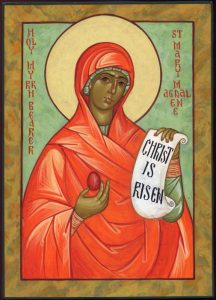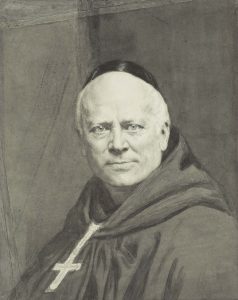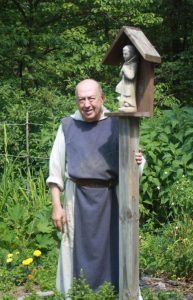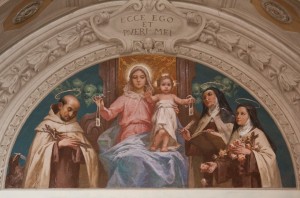 The entire Church rejoices today on this feast of Saint Mary Magdalen, the first to witness to the Resurrection of the Savior. From Magdala, a region in northern Galilee she is the Apostle to the Apostles (a title given by Aquinas) an an evangelist announcing the joyful message of Easter to the whole world. The Magdalene’s name is mentioned in the Gospels 12 times, more than any of the 12.
The entire Church rejoices today on this feast of Saint Mary Magdalen, the first to witness to the Resurrection of the Savior. From Magdala, a region in northern Galilee she is the Apostle to the Apostles (a title given by Aquinas) an an evangelist announcing the joyful message of Easter to the whole world. The Magdalene’s name is mentioned in the Gospels 12 times, more than any of the 12.
Mary’s known for her intensity in adhering to the Lord. From her we learn in a real way what it means to live the attitude of gratitude before God: we can think poignantly of her being released of the seven demons driven out by Jesus. This event of meeting the Lord personally becomes her mission statement for the building up the nascent Body of Christ (the Church) at that time, and for all time.
God’s method of drawing us to Himself if using a woman reputed to have had difficulties with a wholistic and life-giving faith. Hence, one can posit that without Mary’s witness we would never have heard of Jesus Christ’s Resurrection. Theologically she is the key for the soul seeking, more, thirsting for God.
As one Cistercian priest-monk said, “We love Mary Magdalen because of the way in which the boldness of her love for Jesus made her stare death down beyond all human logic or hope. For her there is no question that the Messiah of Israel, sent to redeem all humankind, and the Beloved of her most intimate heart are one and the same person. She perseveres in weeping at the entrance to the tomb because she perseveres in her love: the presence and actions of Jesus in her own life had taught her that love is indeed stronger than death. Against all odds and logic, in a sort of sublime madness, she clings to her Jesus dead or alive; and she does not reason about a her relative physical strength when she says ironically to the man she thought was the gardener, “Tell me where you laid him, and I will take him away.” Because she loves Jesus so much, she is prepared to carry his body away single-handed.”
On June 3, 2016, Archbishop Arthur Roche (of the Congregation for Worship) wrote: “It is right that the liturgical celebration of this woman has the same level of feast given to the celebration of the apostles in the general Roman calendar and highlights the special mission of this woman who is an example and model for every woman in the church.”
A recent prayer for the Year of Mercy of Pope Francis identifies Saint Mary Magdalen: “Your loving gaze freed Zacchaeus and Matthew from being enslaved by money; the adulteress and Magdalene from seeking happiness only in created things; made Peter weep after his betrayal, and assured paradise to the repentant thief.”
Let us attend to the Magdalen for our journey of faith.
 Prayers for the soul of Father Jacques Hamel, killed today in France by ISIS terrorists. At 84, Father gave his life to the Lord while offering the Sacrifice of the Mass in the Church of Saint Etienne. He becomes for us a martyr of the faith. Father was a priest of the Archdiocese of Rouen.
Prayers for the soul of Father Jacques Hamel, killed today in France by ISIS terrorists. At 84, Father gave his life to the Lord while offering the Sacrifice of the Mass in the Church of Saint Etienne. He becomes for us a martyr of the faith. Father was a priest of the Archdiocese of Rouen.



